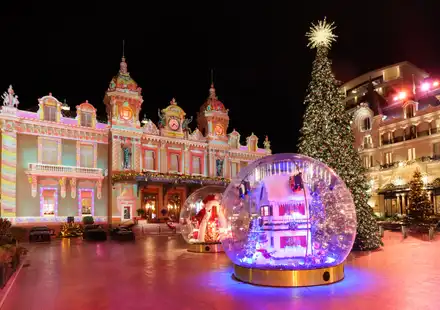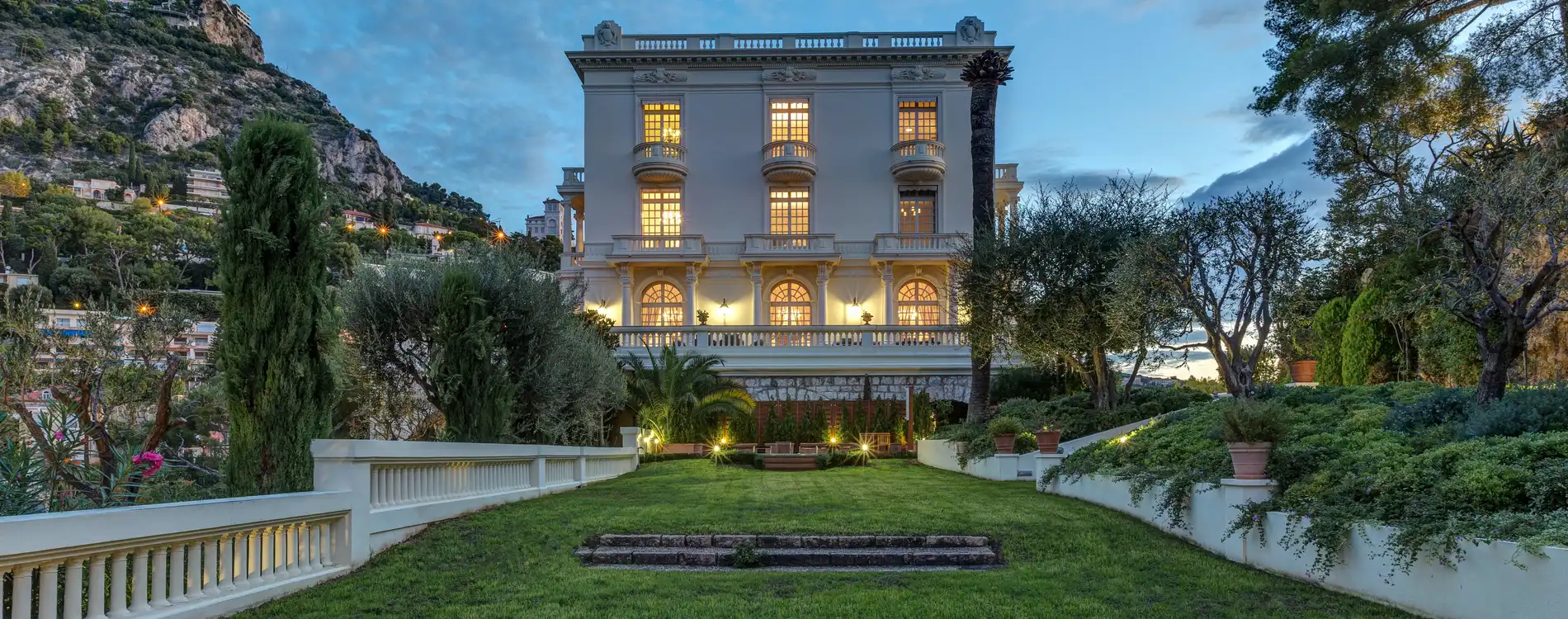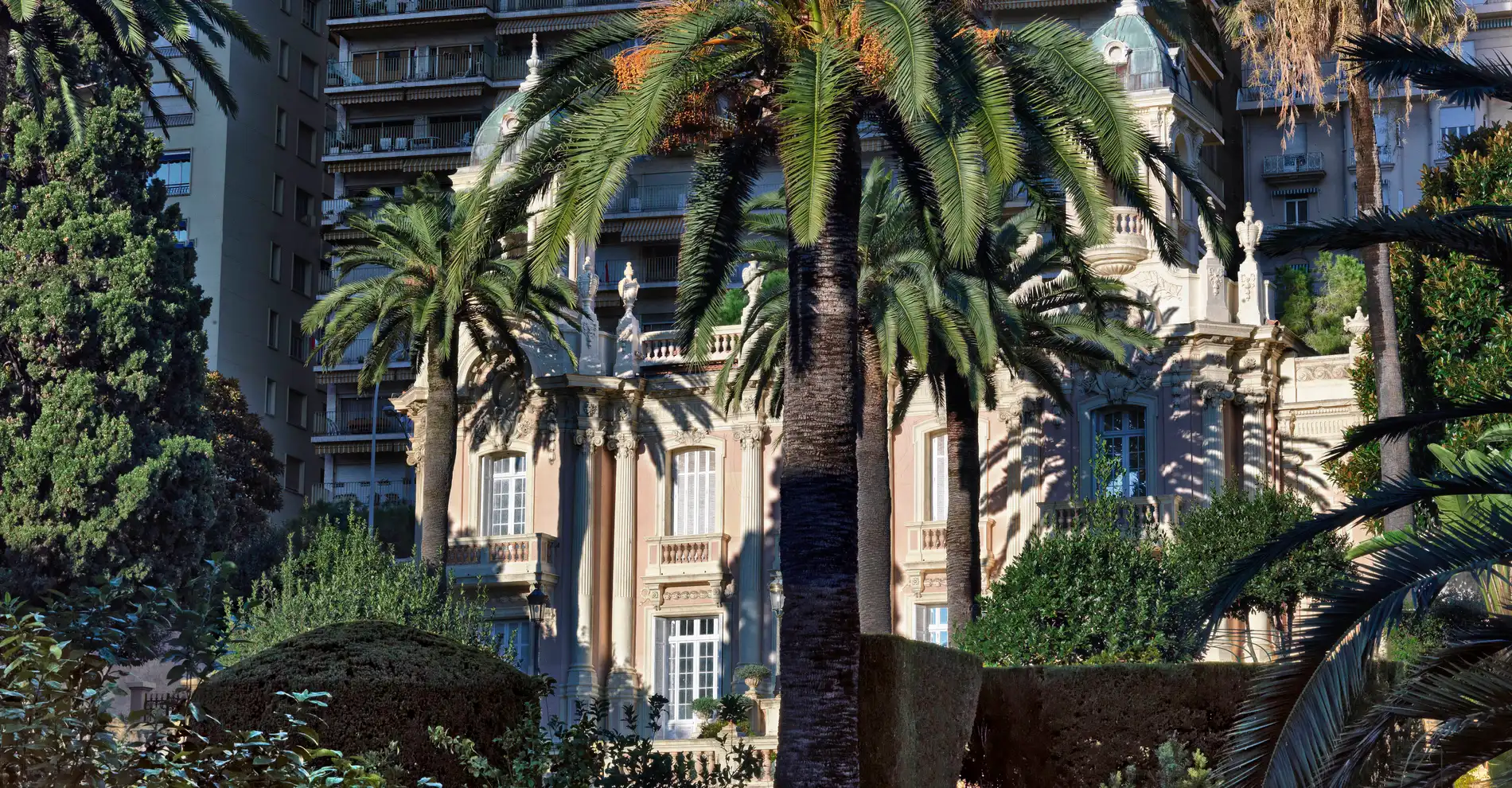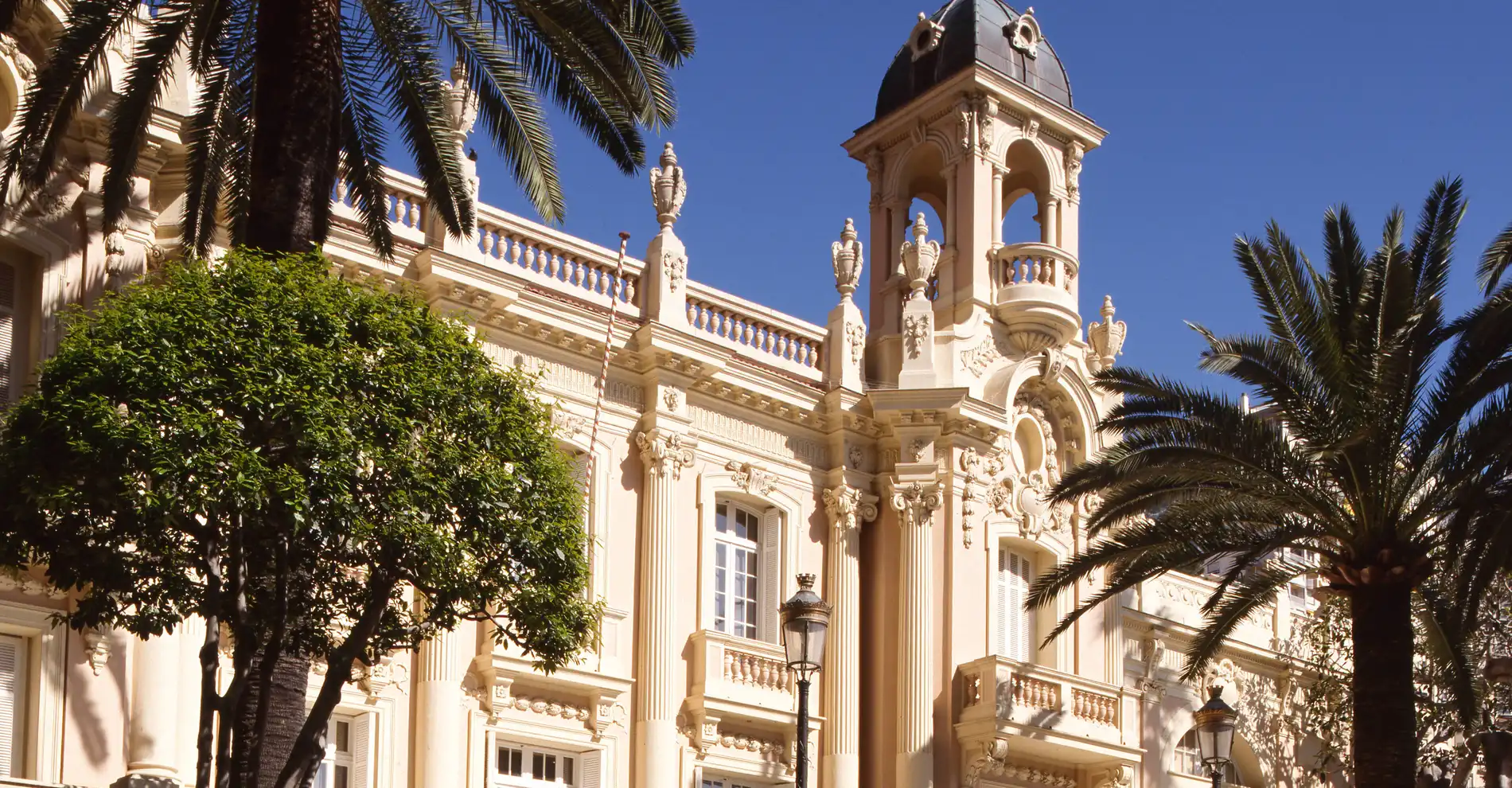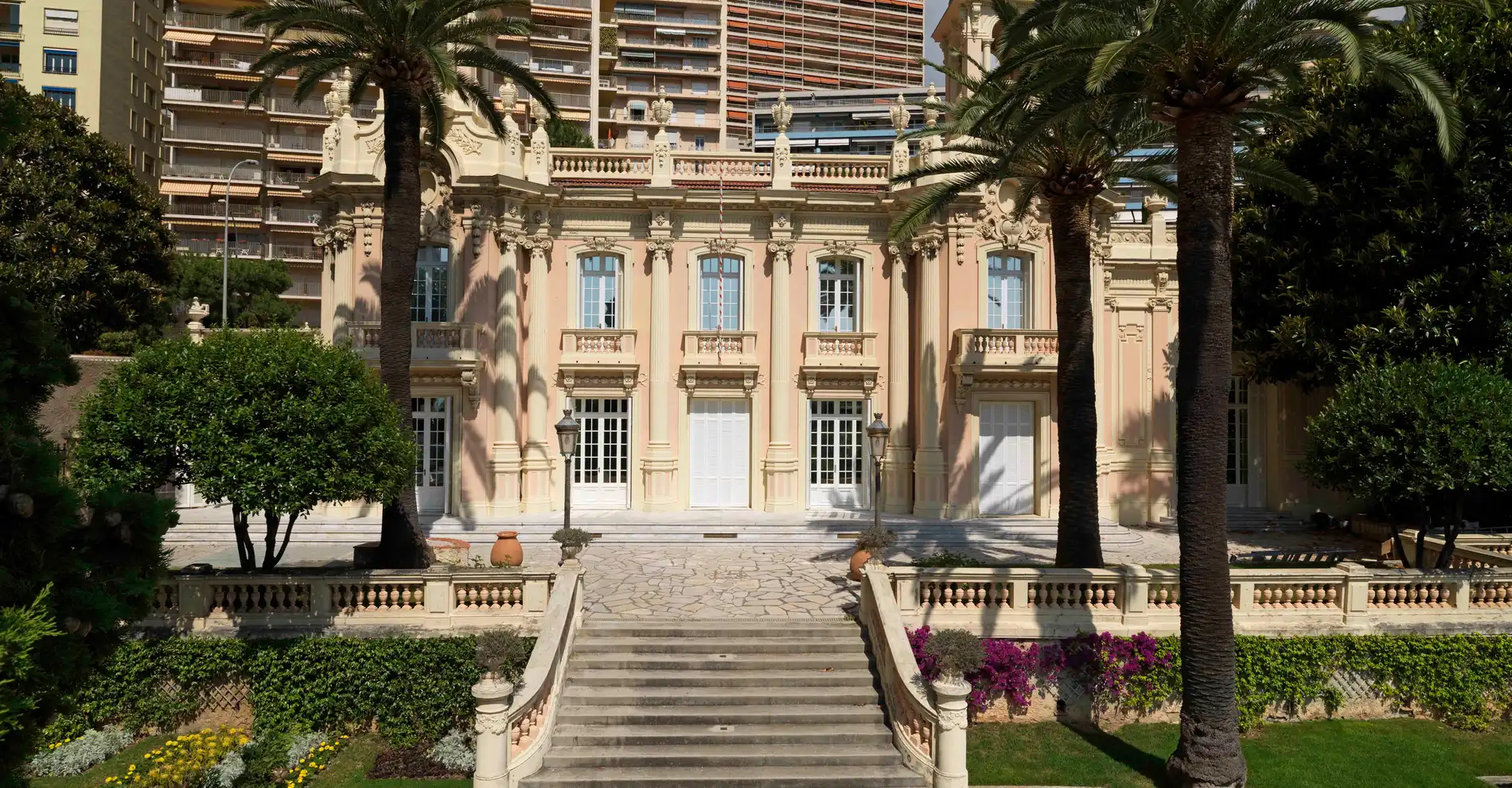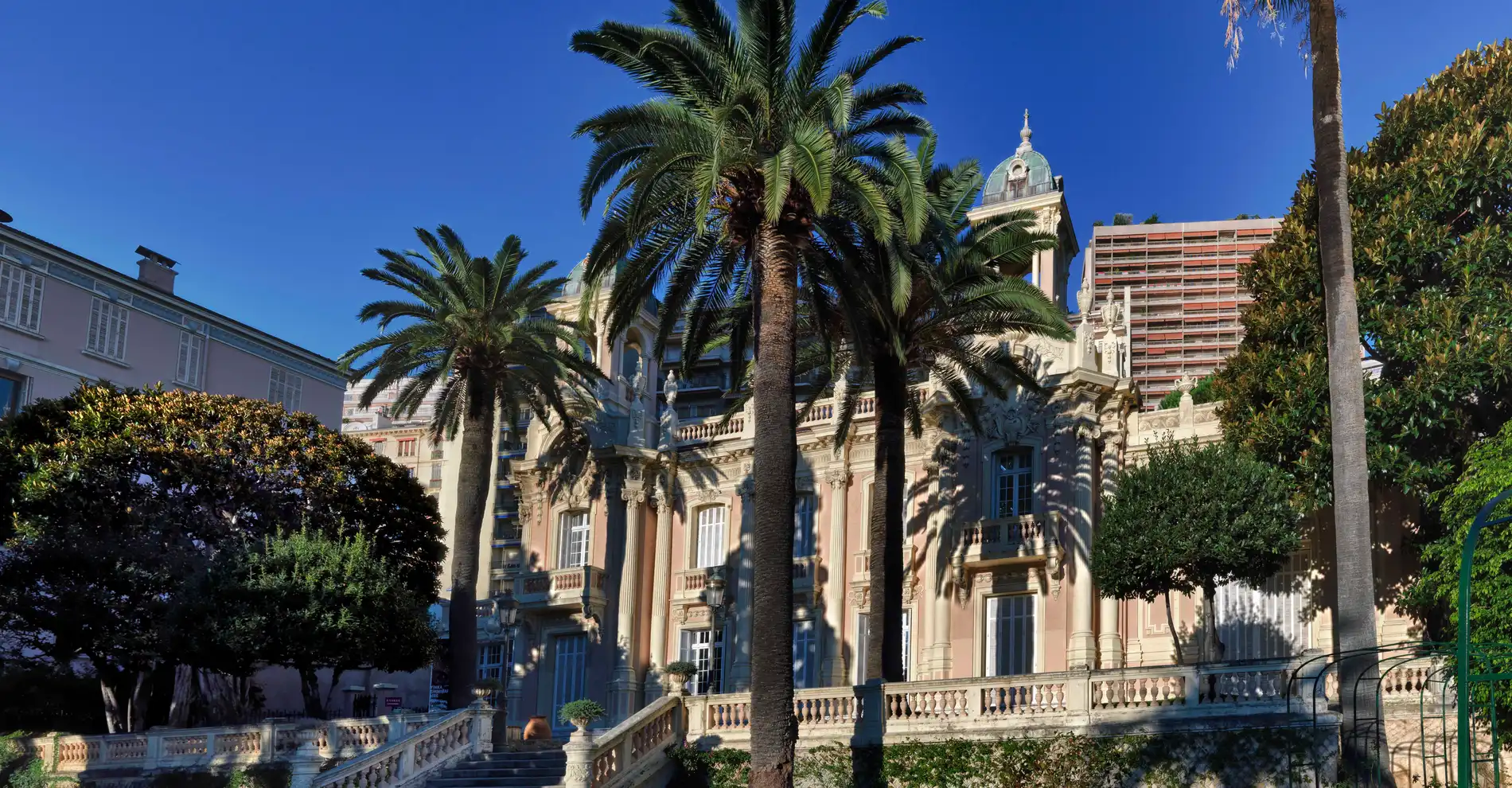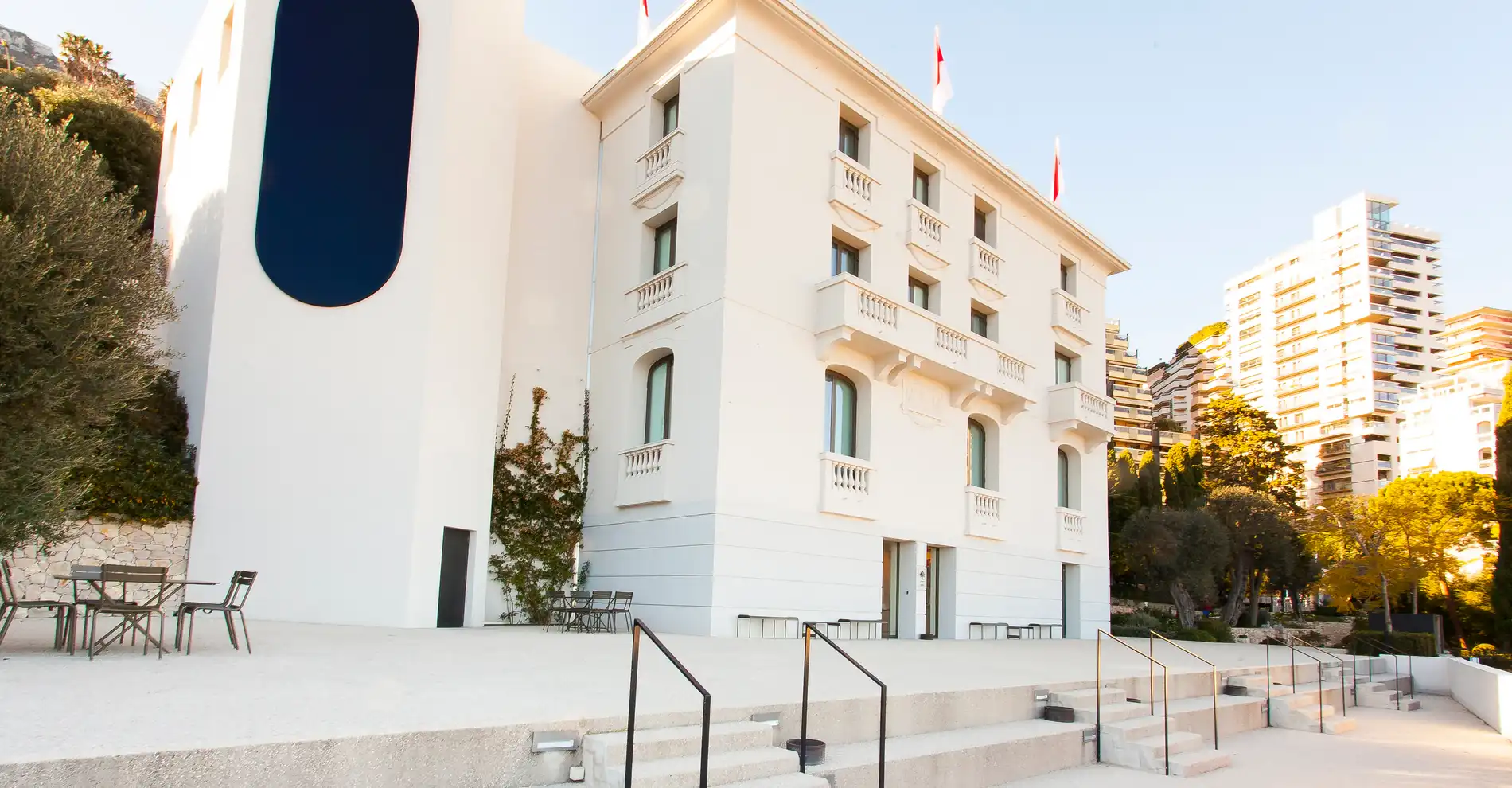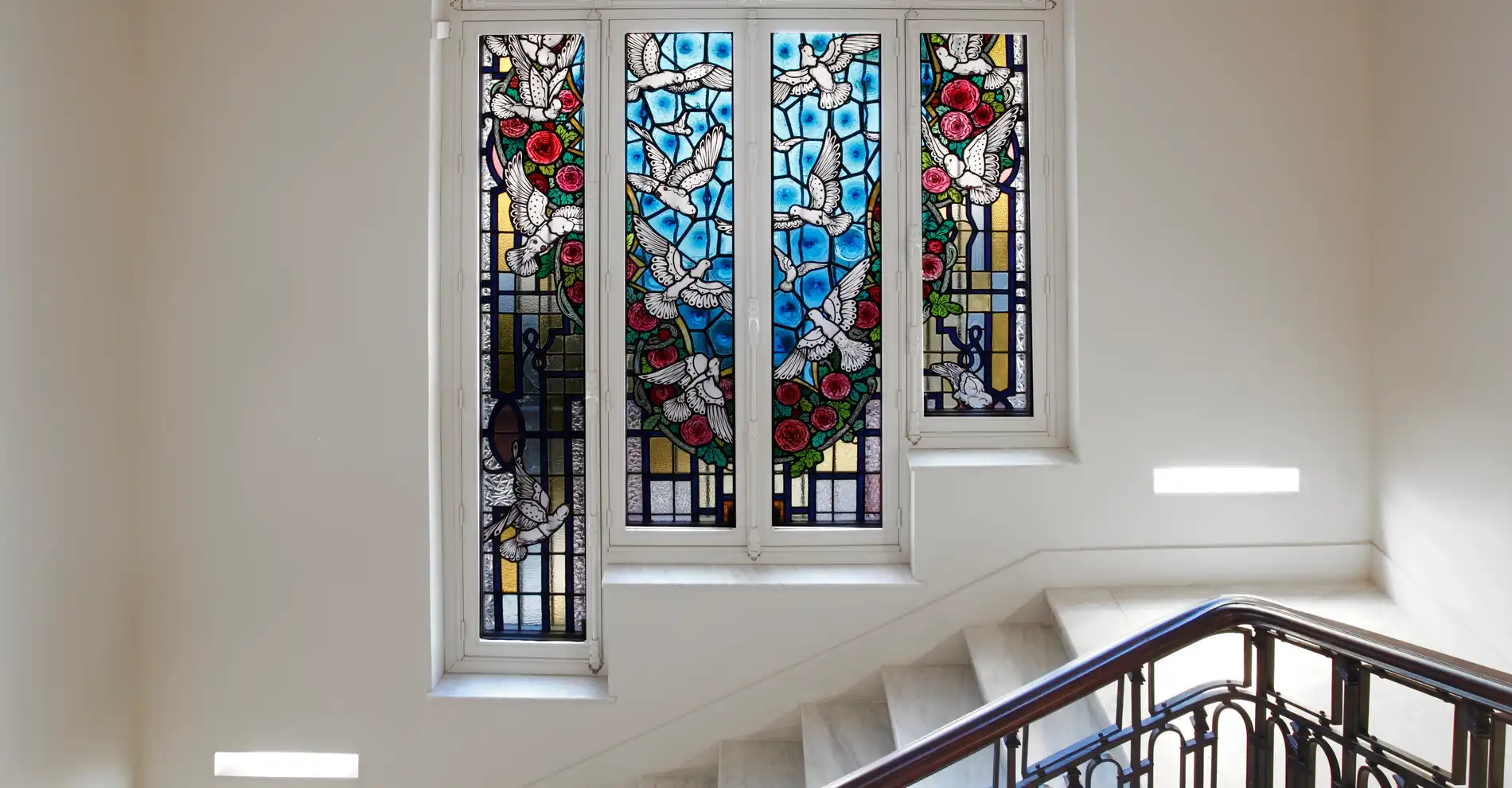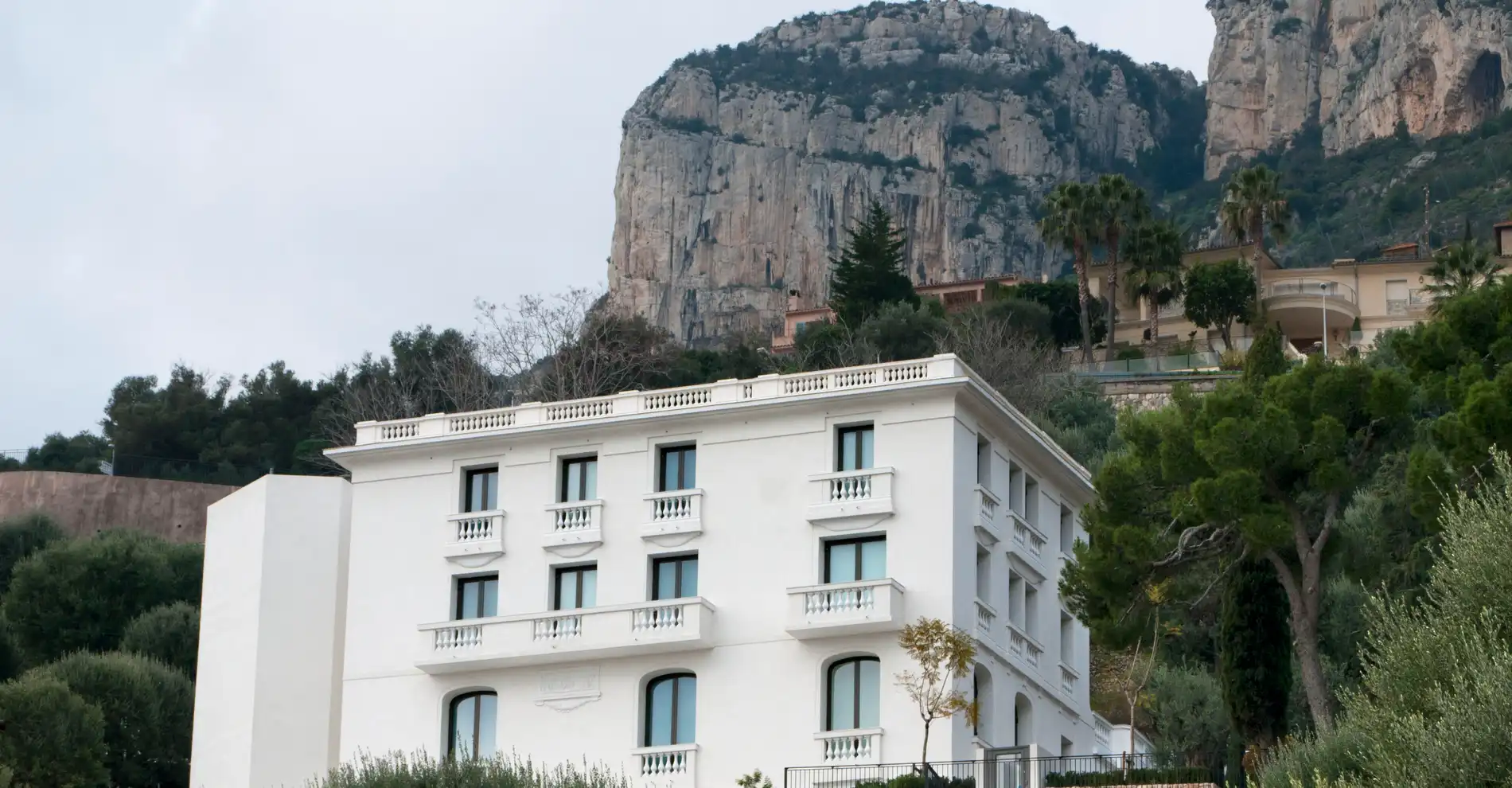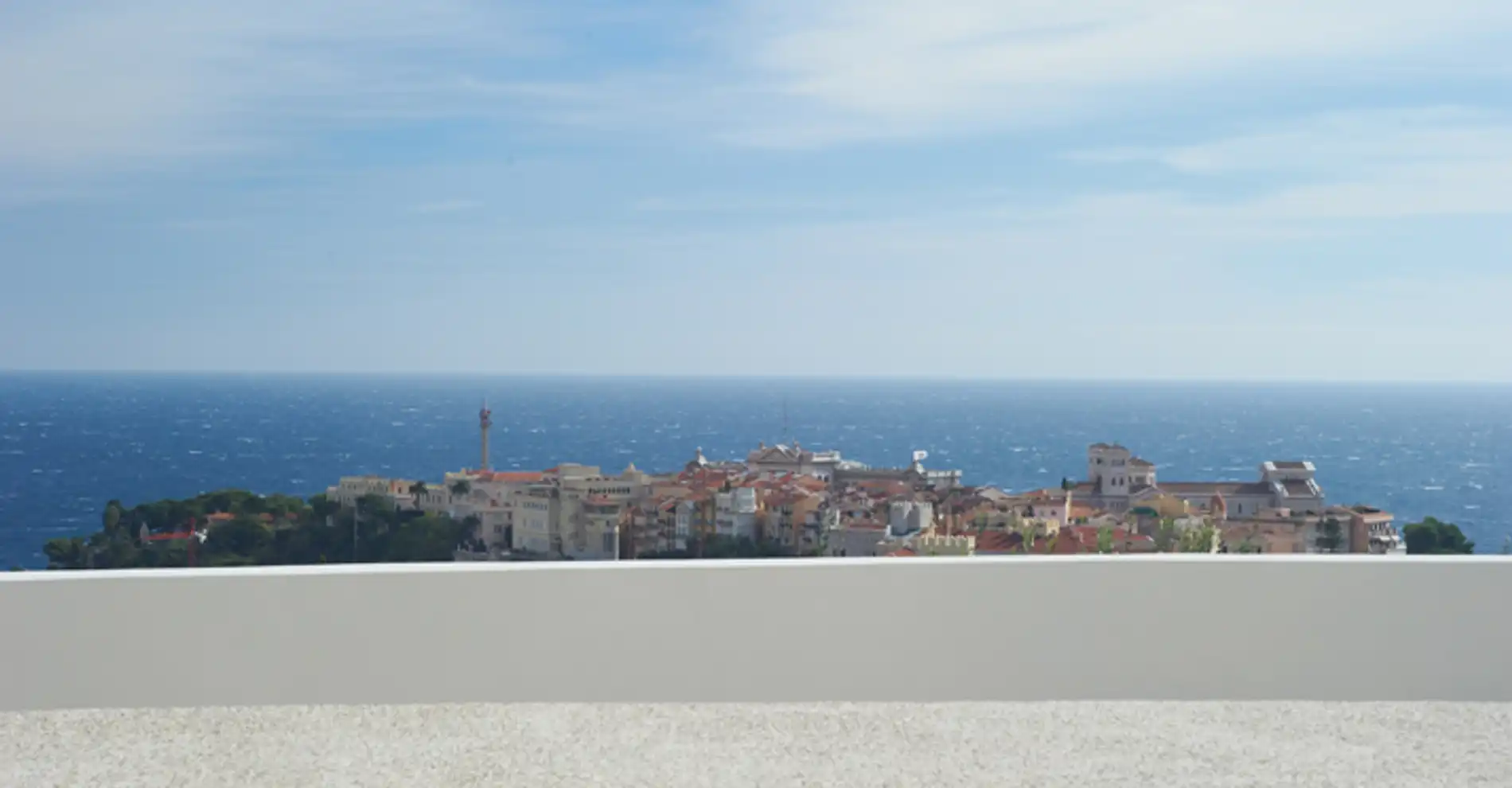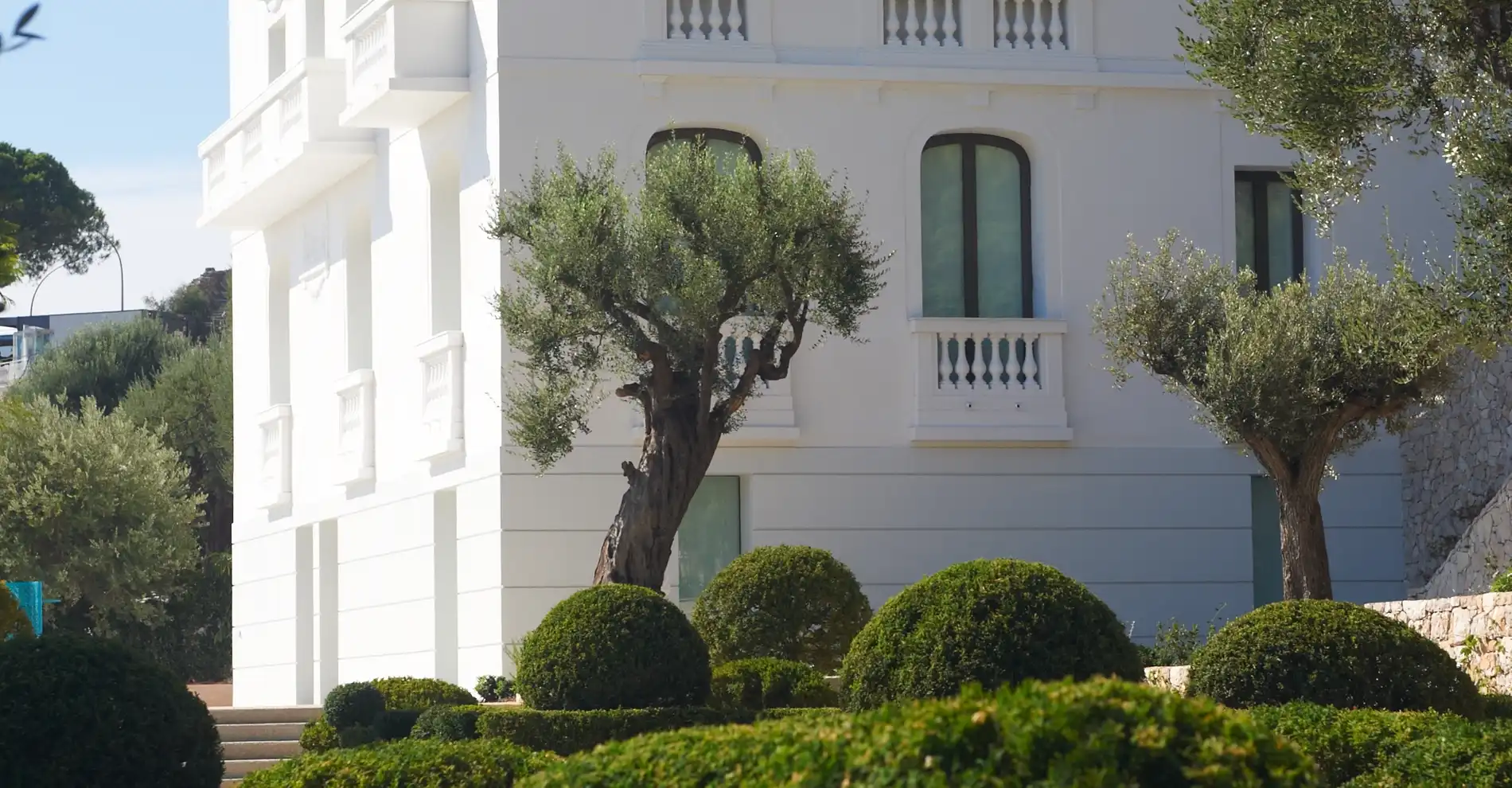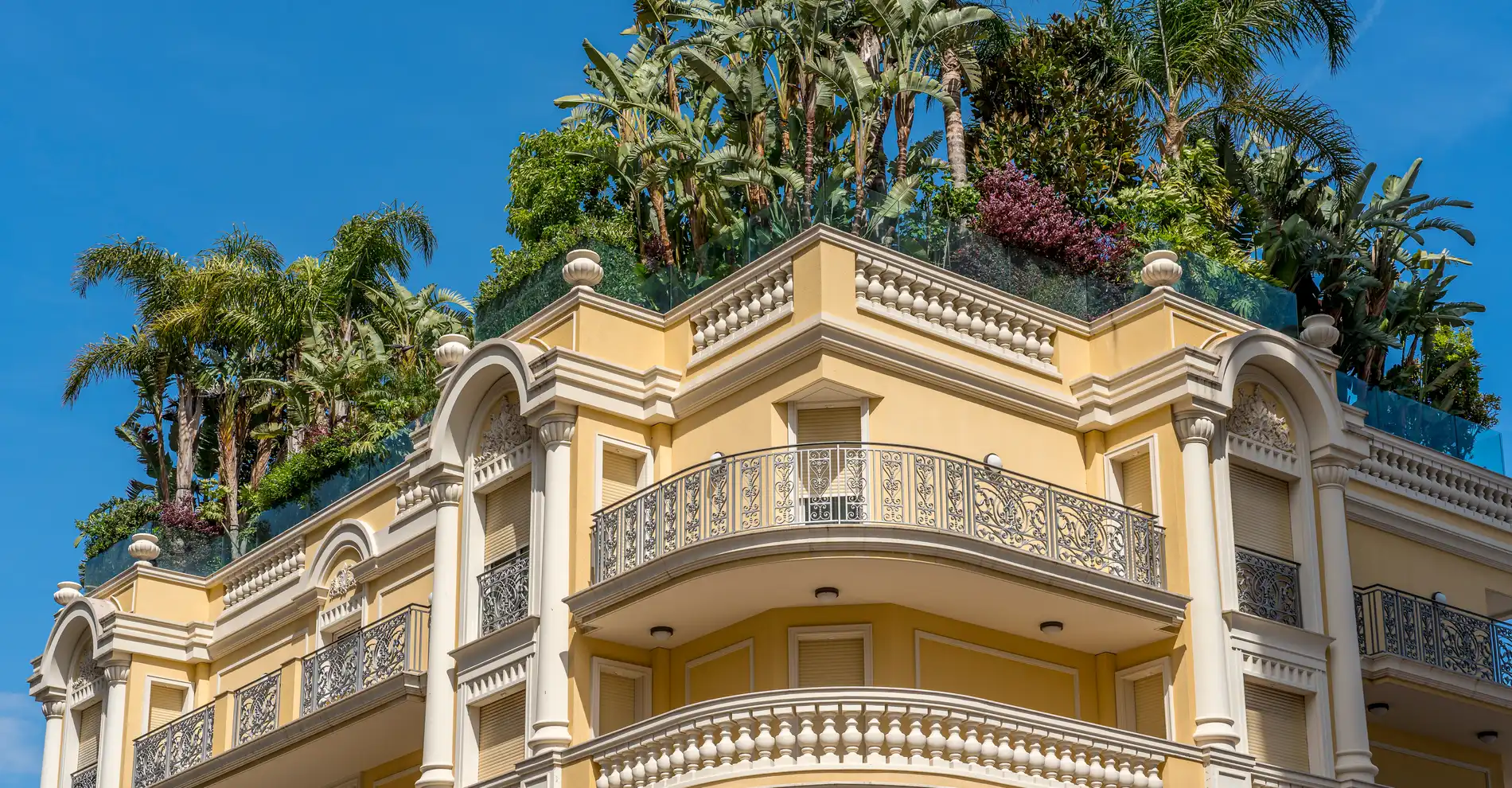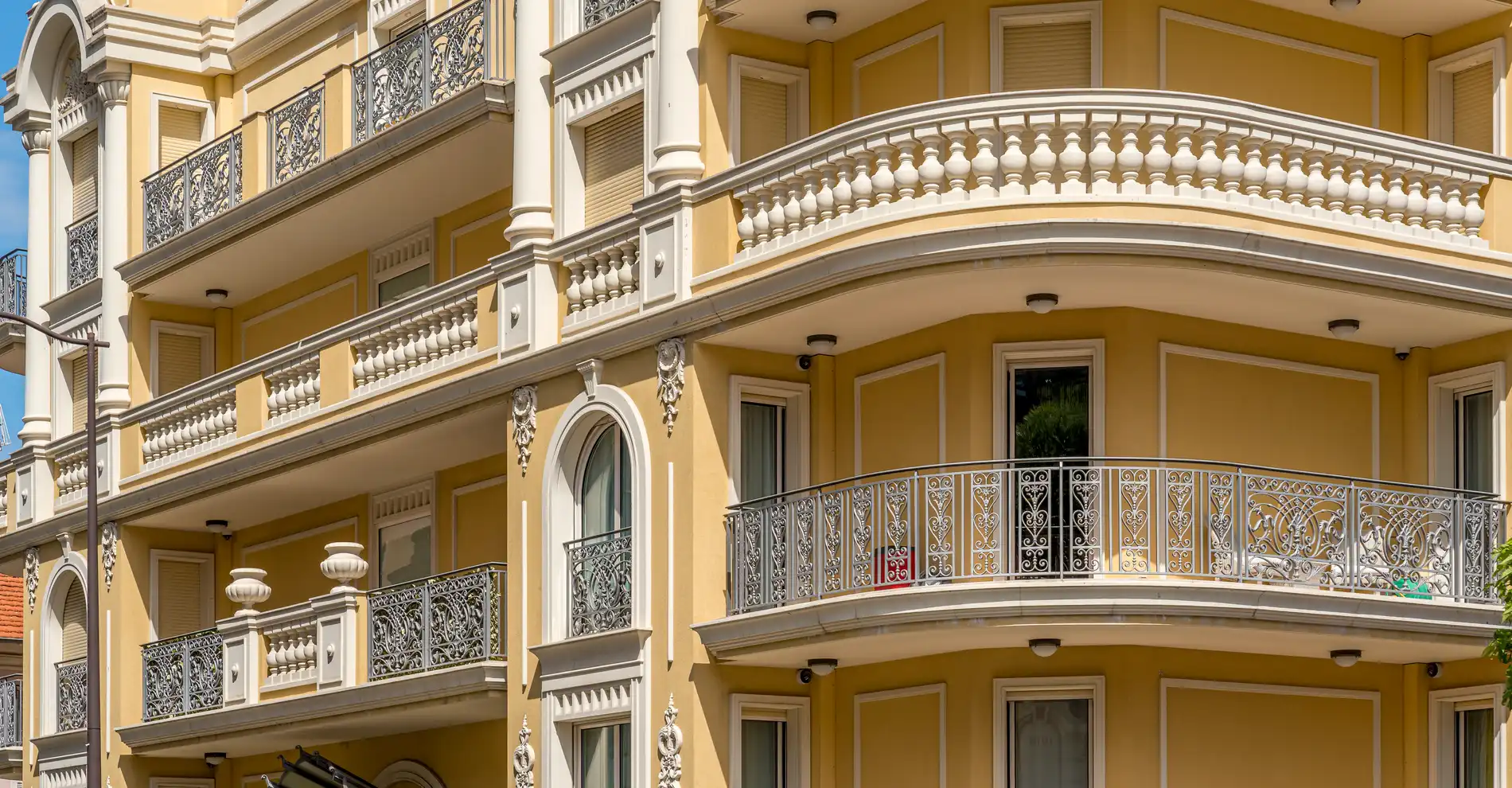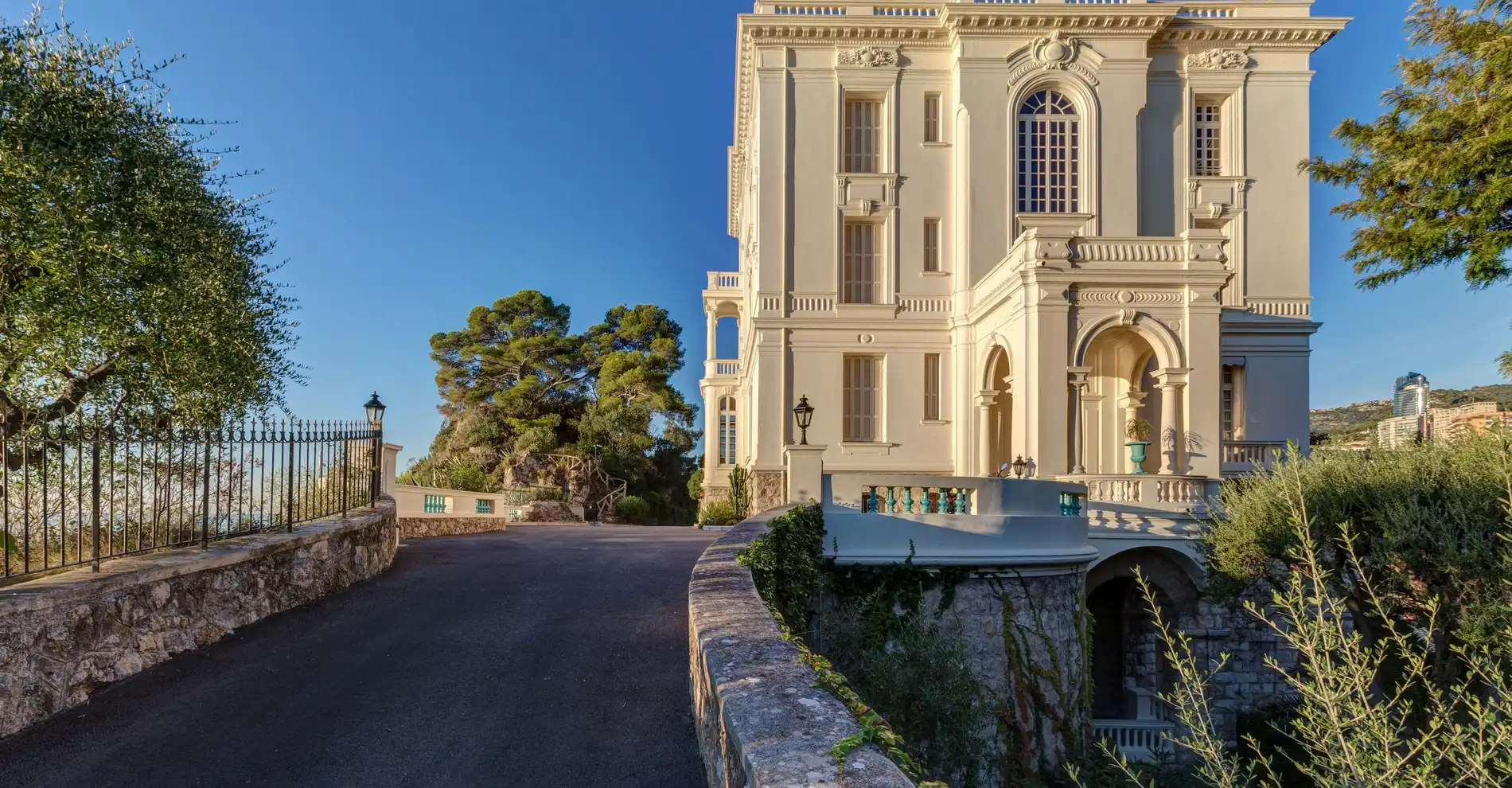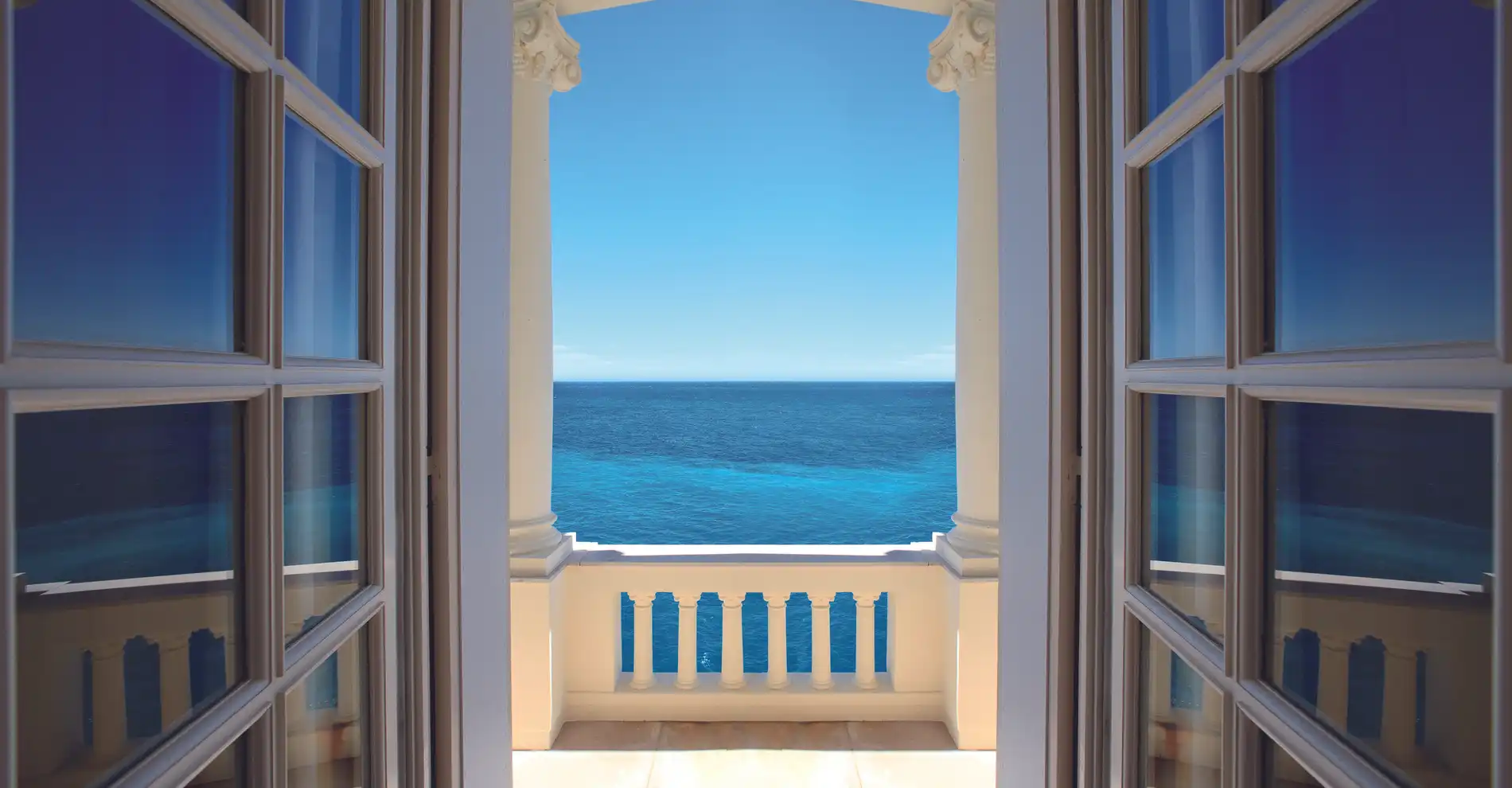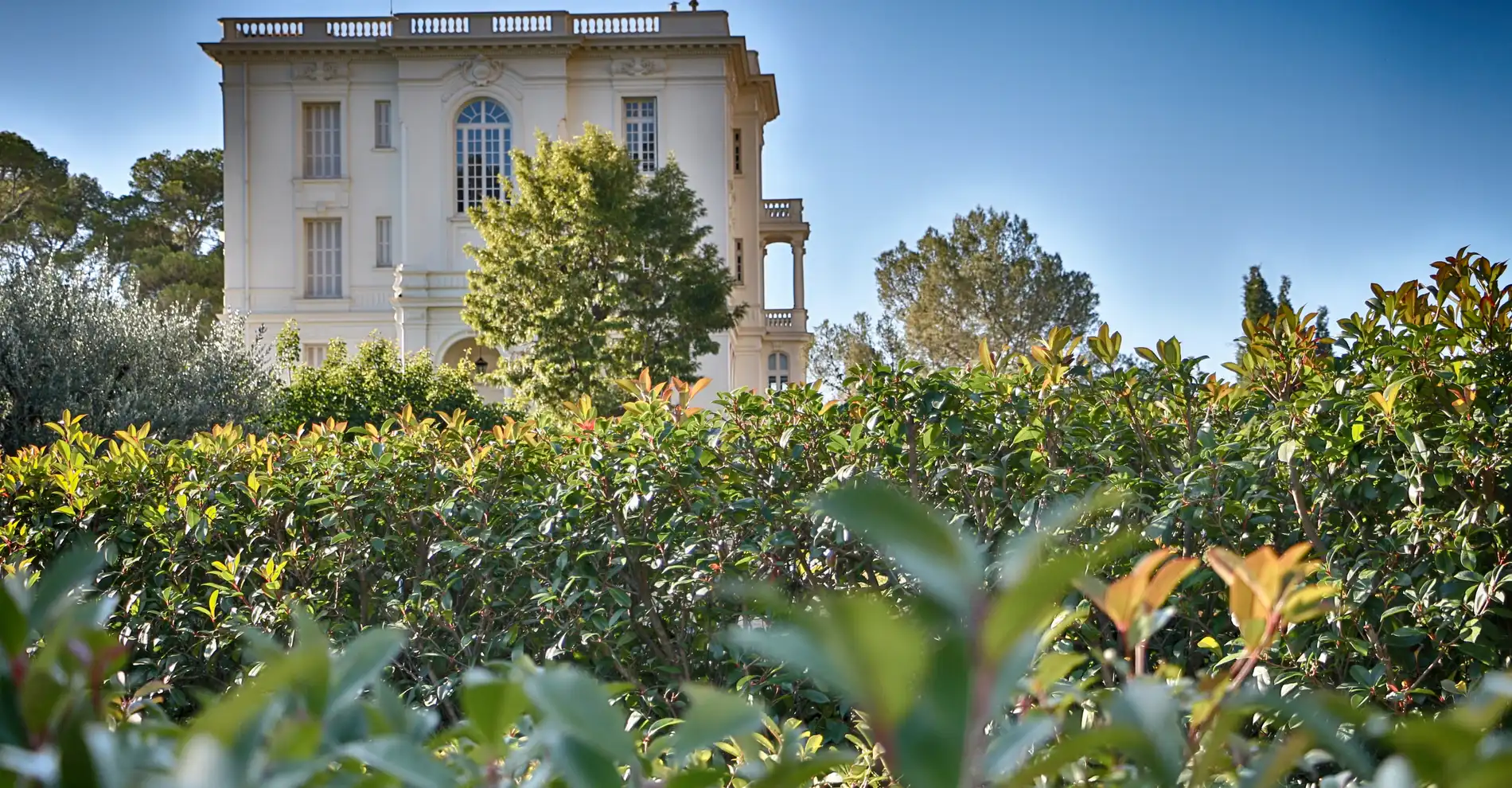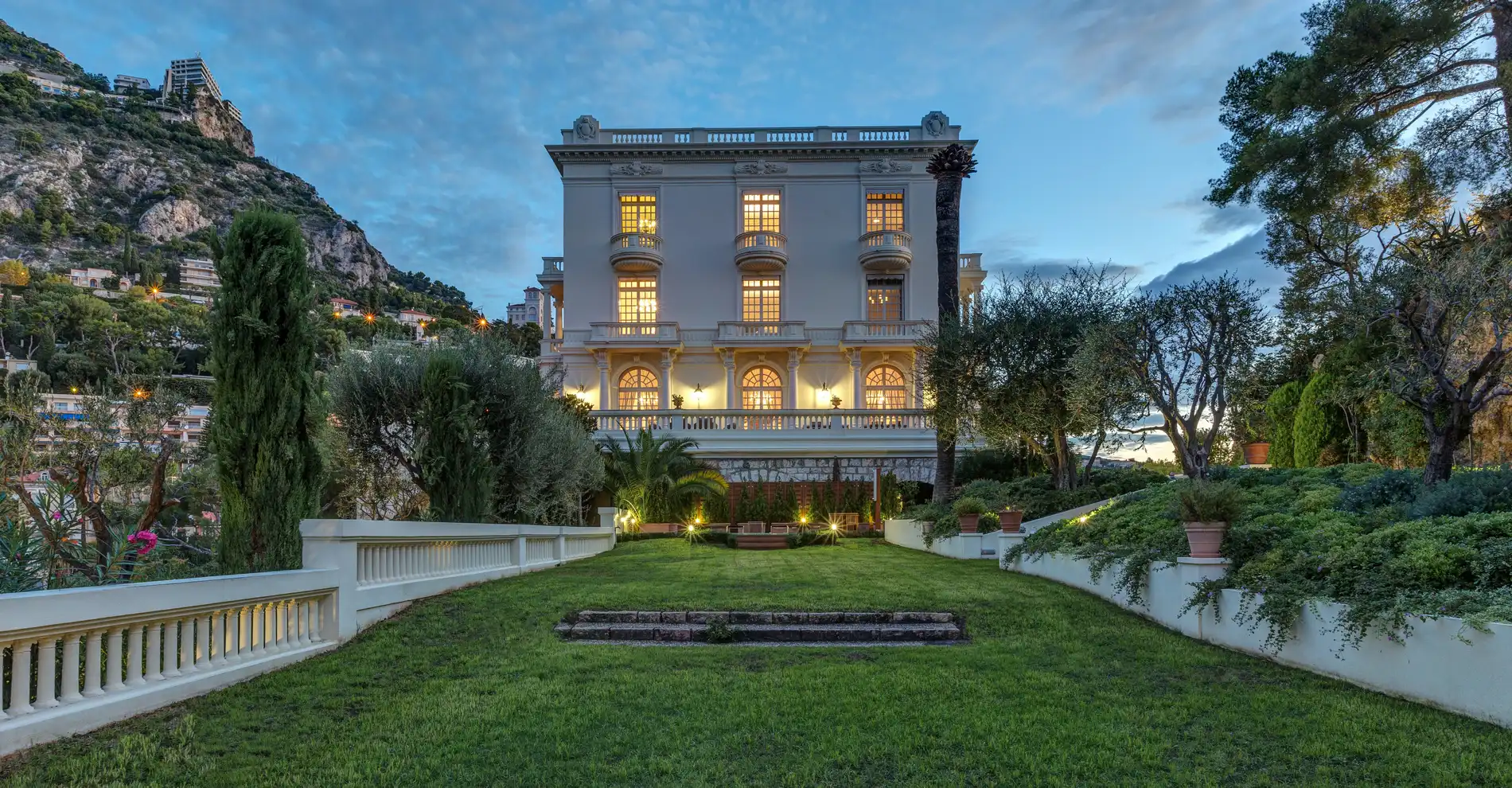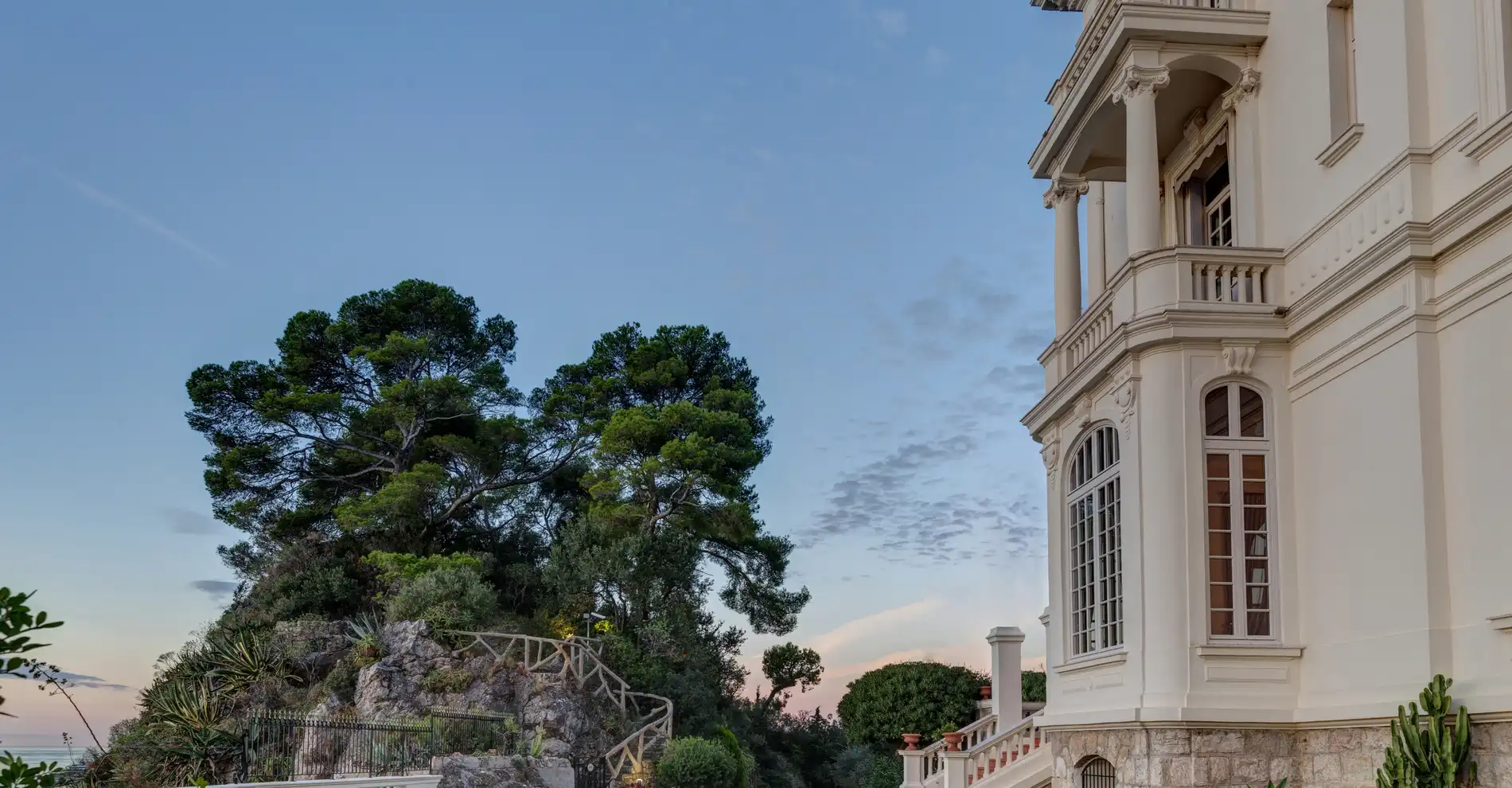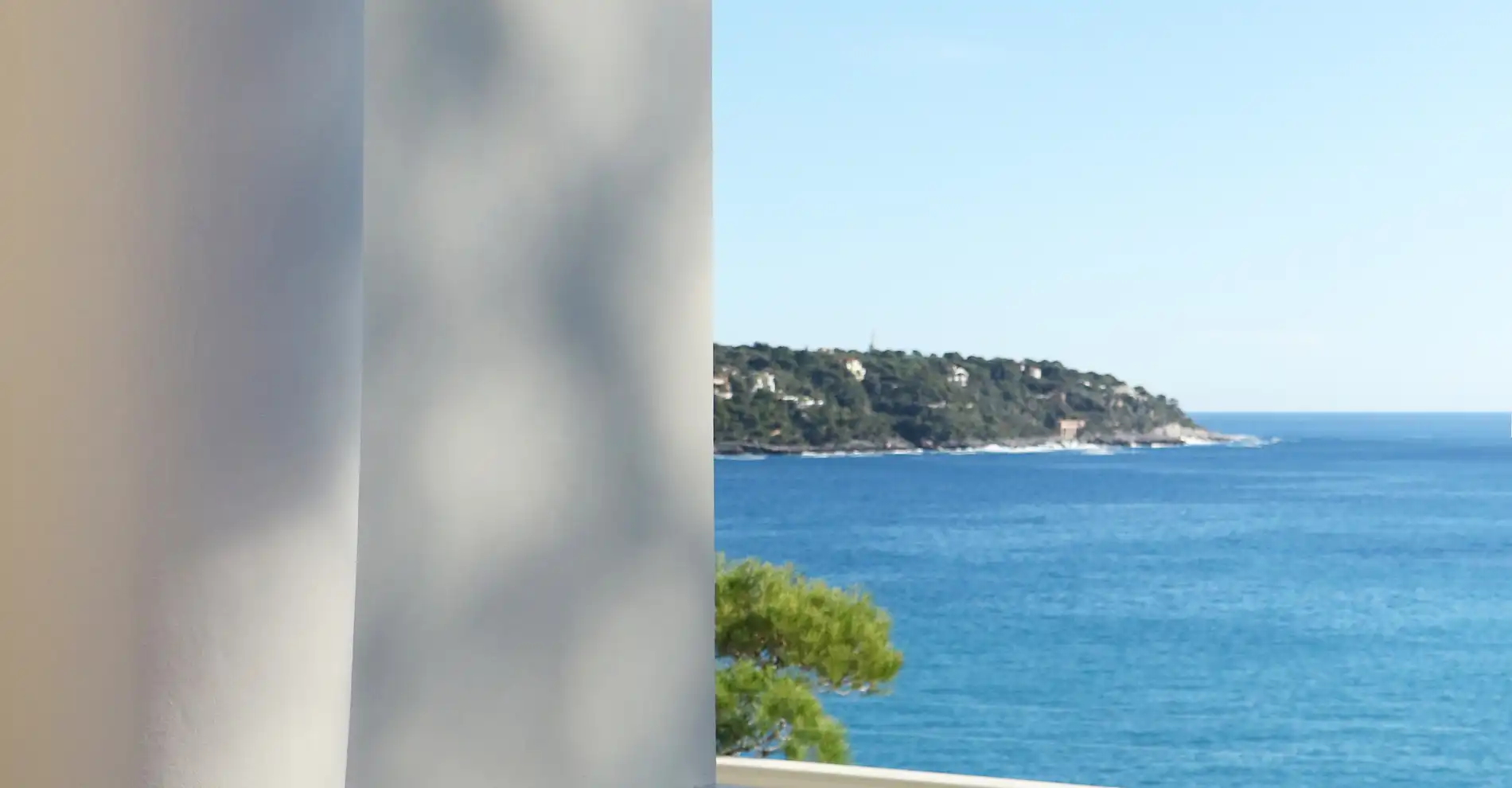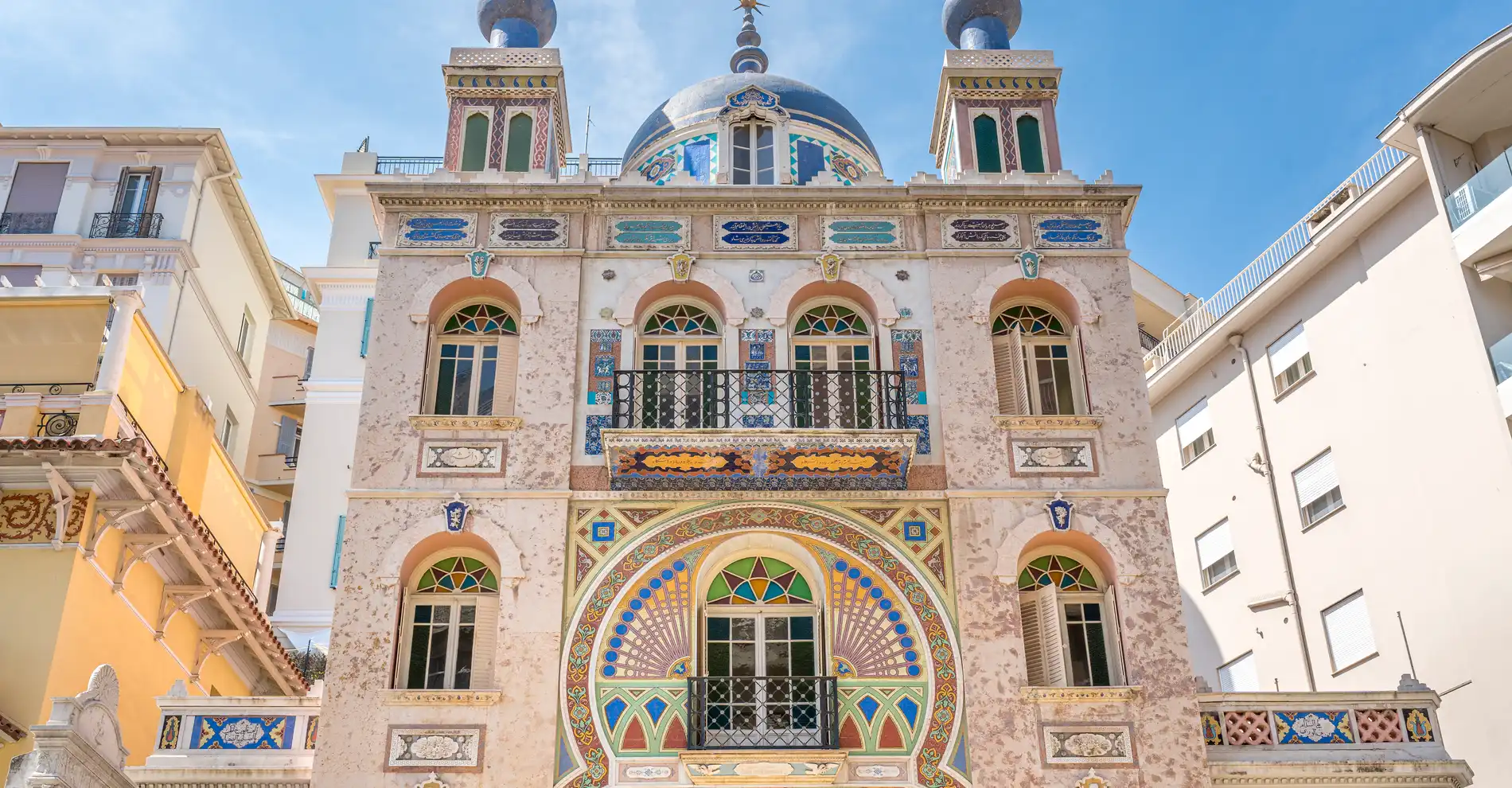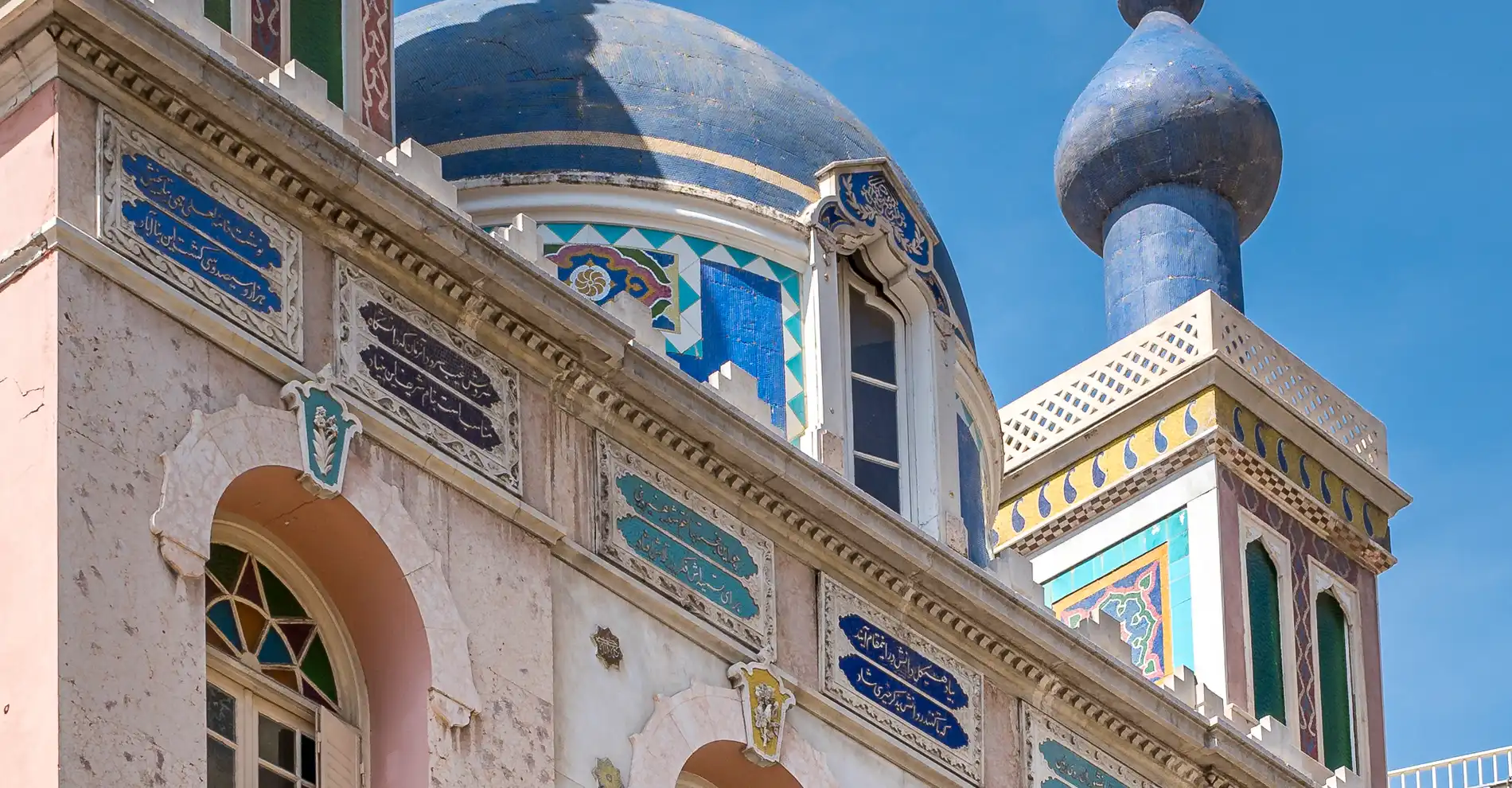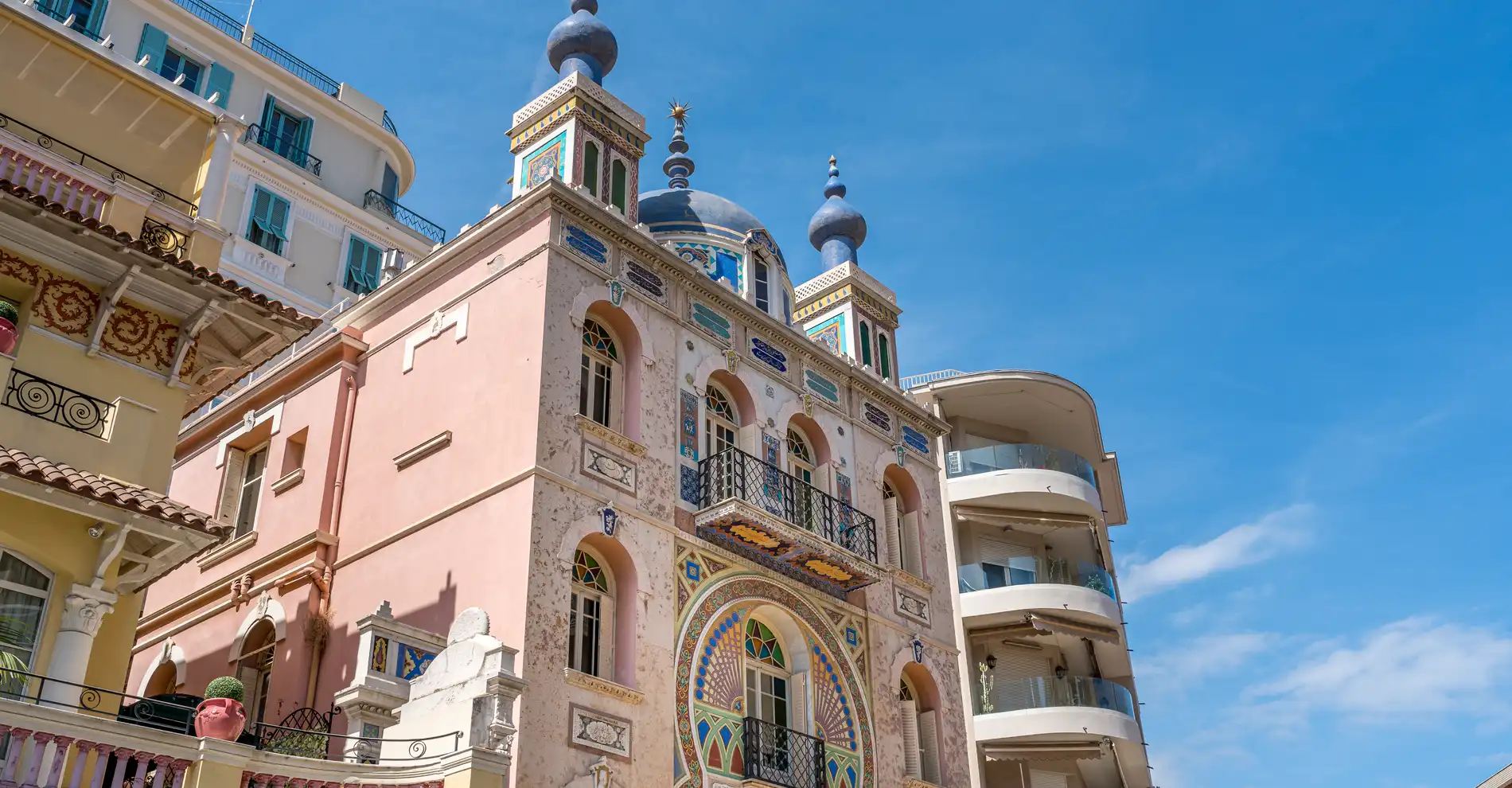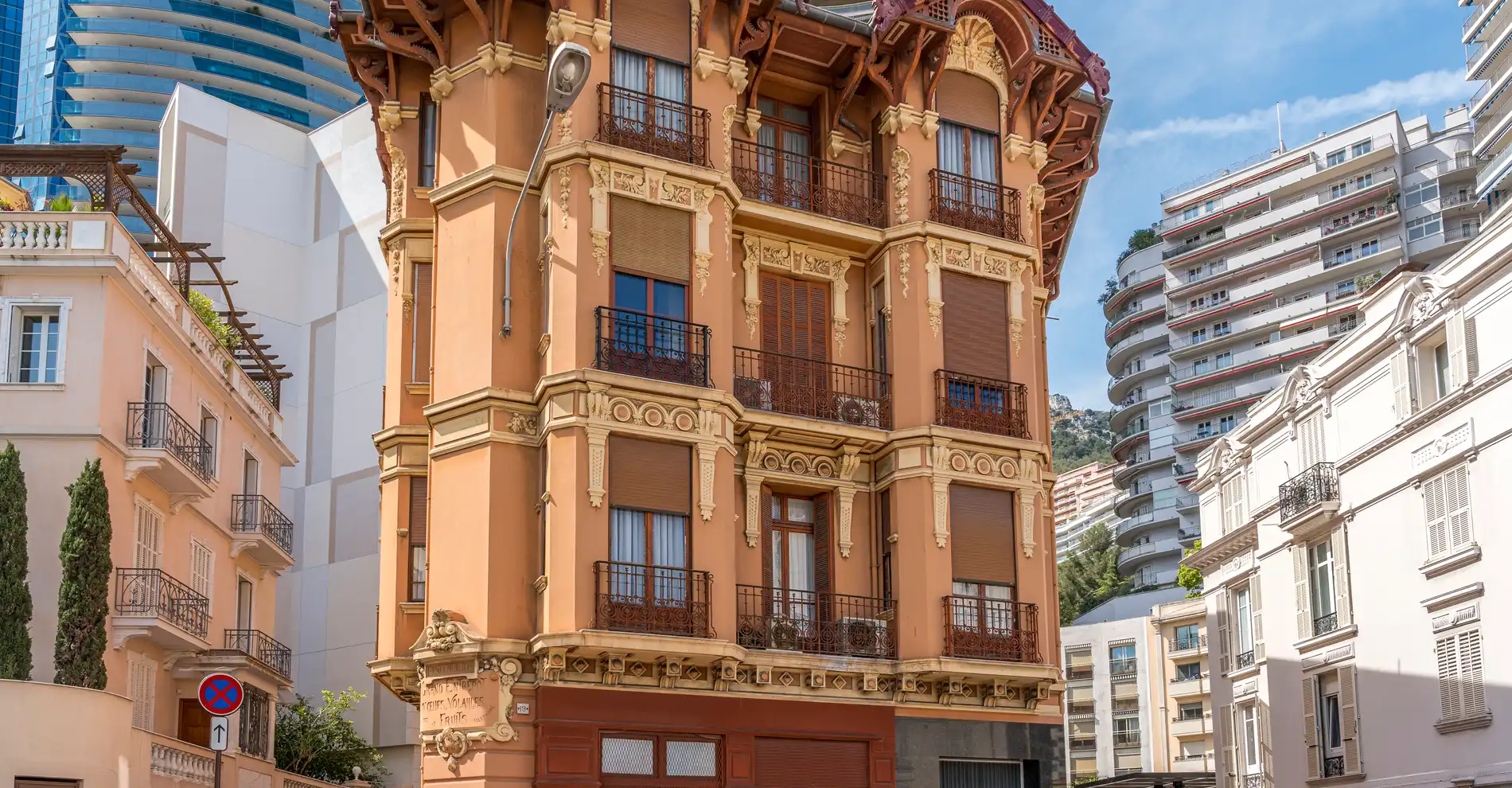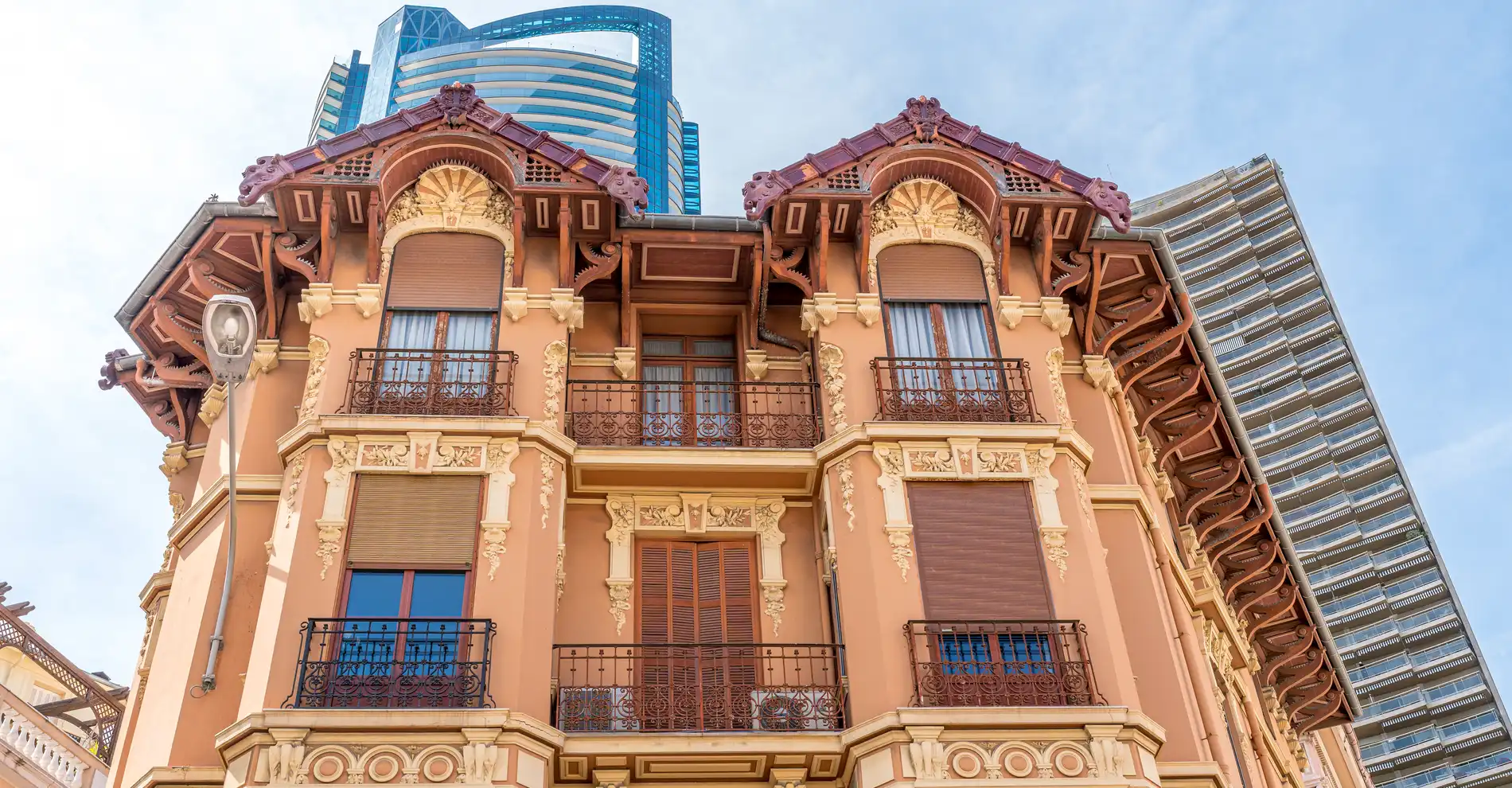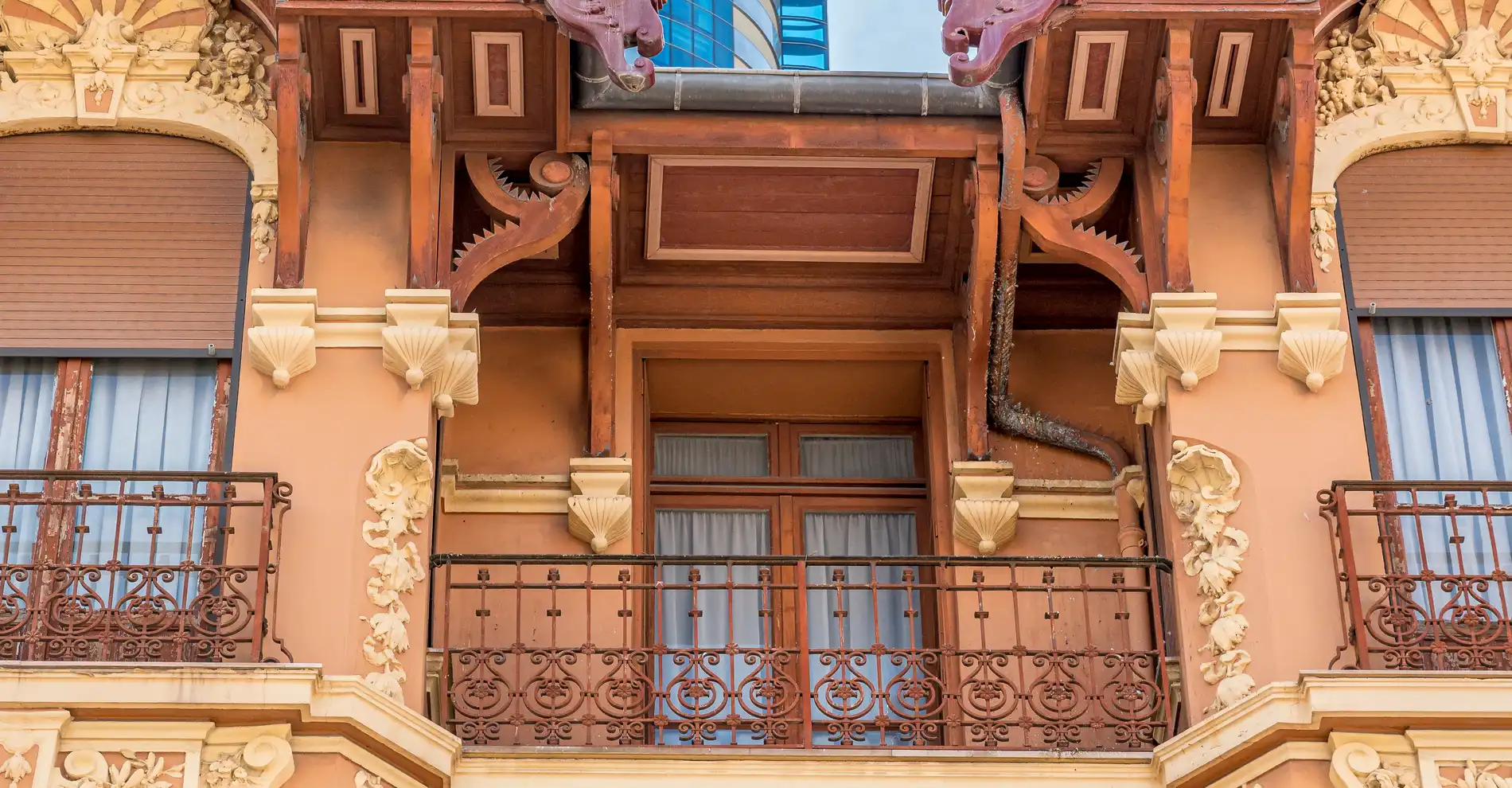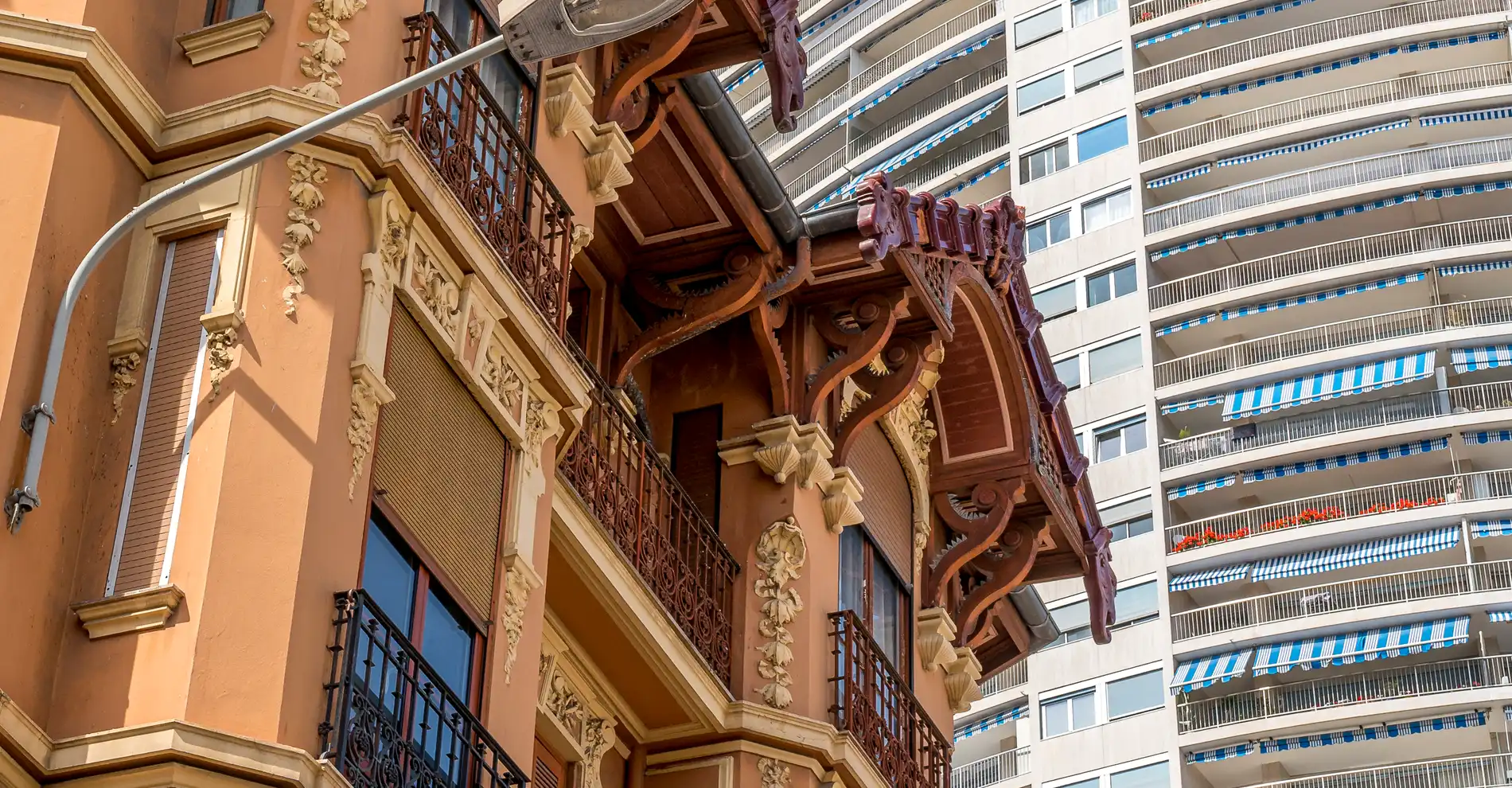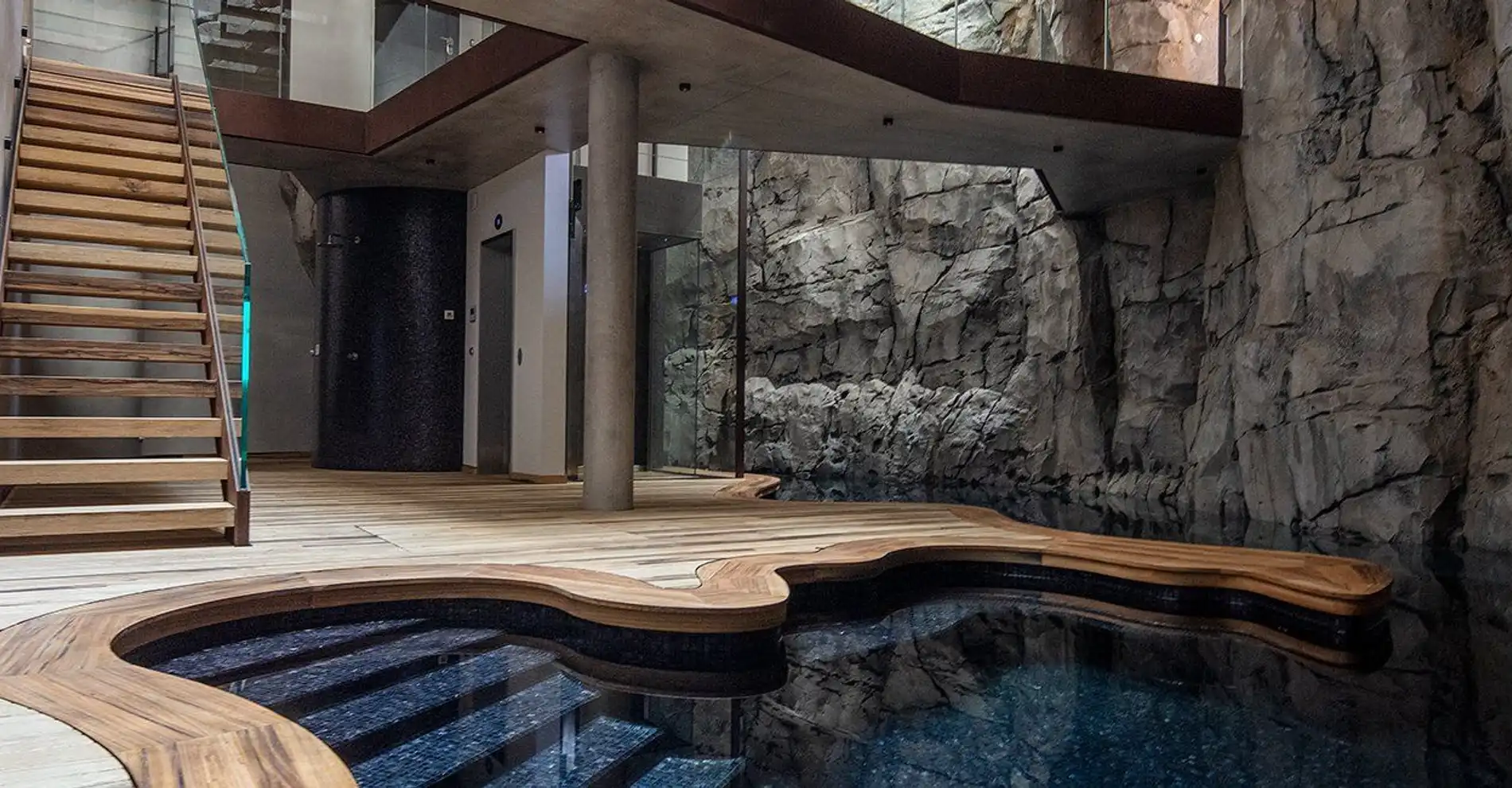Published on November 22, 2023Updated on September 09, 2024
Between the carefree Belle Époque and patrician elegance, between the spirit of Dolce Vita and the scents of the Orient, between the Art Nouveau of the last century and the new challenges of the century to come: at the bend of a boulevard or an avenue, in the heart of a green setting or at the foot of a modern tower, the Principality is home to some real architectural marvels. Sumptuous villas whose silhouettes have become the emblems of Monaco. They are both the memory and the future. Places of history, but also of reflection on the challenges of tomorrow. A non-exhaustive tour of Monaco's most beautiful villas.
Contents
Villa Sauber, the Belle Époque jewel
Villa Paloma, the pretty patrician
Villa L'Oiseau Bleu, neo-classical
Villa La Vigie, the serene guardian of the Riviera spirit
Villa Ispahan or Villa Danichgah, an oriental palace in the Principality
Villa Riberi, Art Nouveau as it was in the past
Villa Troglodyte, luxury at the edge of the rock
Villa Sauber, the Belle Époque jewel
17 avenue Princesse Grace
Monaco
With a façade that Charles Garnier would not have disowned, it remains one of the last Belle Époque villas in Monaco. It's hard to know exactly when the foundation stone was laid. But we do know that, at the turn of the 20th century, Villa Sauber was owned by Marie Blanc, the 'grande dame of Monte Carlo’. The only difference was that it was not yet called Villa Sauber, but Villa des Bas-Moulins, after the district along the coast. At that time, there was still no Larvotto beach, and the pretty property sloped down to the path bordering the Mediterranean. It took the name ‘Sauber’ in 1904, when the English painter Robert H. Sauber bought it. The west wing became his studio, where the artist installed his canvases and easels. He and his wife stayed there for ten years, before selling the house on the eve of the First World War. But no doubt attached to the place, the painter and his wife bought it in 1925, only to leave it for good in the early 1930s. After several successive owners, the villa and its gardens became the property of the Monegasque State in 1969. Three years later, a completely renovated Villa Sauber opened its doors to the public as the National Museum. Since 2009, a number of contemporary art exhibitions have been held here, under the shared title (with the Villa Paloma) of the New National Museum of Monaco (NMNM).
Villa Paloma, the pretty patrician
56 boulevard du Jardin exotique
Monaco
In 1913, the American Edward N. Dickerson decided to bring together six parcels of land, scattered among several owners, to build a villa and garden. This was on the heights of Monaco, in the former Révoires district, on boulevard de l'Observatoire, now called boulevard du Jardin exotique. The three-storey construction, then named Villa Coquette, overlooked La Condamine, Le Rocher and Port Hercule - the Port of Fontvieille did not yet exist. It was not until Robert W. Hudson bought the villa in 1925 and married Beatrice Sabina Gaudengio in 1932 that it was renamed Villa Paloma. The house was severely damaged during the Second World War and owes its renaissance to Joseph Fissore, its new owner since 1950. The villa now boasts a swimming pool and magnificent 'antique-style' gardens designed by Octave Godard, a brilliant disciple of the landscape gardener Édouard André. As for the stained glass windows in its main hall, they are the work of Fassi Cadet, a master glassworker from Nice. Bought by the State in 1995, the beautiful patrician residence became the NMNM's second exhibition venue in 2010, alongside the Villa Sauber: a mirror of the Principality's heritage, a showcase for contemporary art and a meeting point for different disciplines.
Villa L'Oiseau Bleu, the neoclassical style
17 avenue Crovetto Frères
Monaco
When the present is inspired by the past, the result is L'Oiseau Bleu, an architectural gem built in 2011 and designed by the architect Alexandre Giraldi. With its neoclassical inspiration, wrought-iron balconies and colonnades, this exceptional building is a tribute to Monaco's heritage. The extremely sophisticated entrance halls are the work of the renowned designer Jacques Garcia. Located in the ‘Jardin exotique’ district, this 13-storey luxury building comprises 21 luxury flats with balconies, as well as a gym. The top floors feature a triplex penthouse.
Villa La Vigie, serene guardian of the Riviera spirit
Avenue Princesse Grace - Quartier Saint Roman
Roquebrune Cap-Martin
At the end of a driveway lined with lemon trees, cypresses and bougainvillea, its neoclassical architecture stands on three levels on the edge of Monaco: since 1902, Villa La Vigie has watched over the bay of Roquebrune-Cap-Martin. A haven of peace conceived and designed by and for the English Lord Sir William Ingram, a politician and media man. All around, overlooking the Mediterranean, a magnificent park planted with trees and landscaped as an exotic garden. Slightly below, the Monte-Carlo Beach hotel, the legend of the 1930s. And beyond that, one of the finest views of the Mediterranean and the Principality. This luxurious villa owes its fame above all to the fact that it was home to the great fashion designer Karl Lagerfeld, who found inspiration for his creations and an idyllic setting for his photographic work here for over ten years. Its refined interiors combine marble and parquet flooring, columns and fireplaces. Outside, a vast terrace stretches the length of the building, offering breathtaking views. Owned by the Monte-Carlo Société des Bains de Mer since 1952, Villa La Vigie remained unoccupied until Karl Lagerfeld decided to make it his residence in 1986, a situation that lasted until 2000. Since then, the residence has delighted a few privileged guests who, for a week or a month, enjoy an extraordinary experience in one of the most prestigious villas on the Côte d'Azur.
Villa Ispahan or Villa Danichgah, an oriental palace in the Principality
57 boulevard du Jardin exotique
Monaco
Disconcerting, timeless, astonishing... The Villa Ispahan always leaves an impression when you first catch sight of it from the heights of the Moneghetti district. Until 1986, it was known as Villa Danichgah, literally "the poet's house". Built in 1910, this sumptuous villa was the home of Prince Arfa Mirza Riza Khan, a Persian diplomat and close associate of HSH Prince Albert I. He was also a brilliant humanist and literary man, and a friend of Pierre Loti. He and his wife lived in the villa, surrounded by art works, antiques and other treasures. Its architecture, directly inspired by the Shah's mosque in Isfahan, Iran's third largest city, remains a monument to Persian refinement in the heart of Monaco. Its blue minarets, coloured earthenware façade, Persian inscriptions and arabesques symbolising the solar lion, the emblem of imperial Persia, give it a unique appearance. Inside, the iridescent marble, mosaics and other gold leaf ornamentation are period features. A museum of Persian art and culture in the 1960s, then put up for sale in 2019, Villa Ispahan is now the headquarters of the Indonesian consulate in Monaco.
Villa Riberi, Art Nouveau as it used to be
19 boulevard d'Italie
Monaco
In the shadow of the vertiginous Odeon Tower, the Villa Riberi, more than 100 years its senior, lives happily at 19 boulevard d'Italie, in the Rousse district, where it has resided since 1908. 'Riberi’ is named after its inspirer, Paul Riberi, who, when he commissioned architect Victor Isouard to build it, never imagined that his Art Nouveau marvel would one day be encircled by glass and steel. Art nouveau? Not quite, in fact, since the Villa Riberi seems to delight in blurring the lines with its eclectic style of bow-windows, hipped roofs and wooden arches. On either side of its façade are inscriptions: "Large warehouse of eggs, poultry and fruit". Reminiscences of yesteryear and the marks of history, those of Monaco's inspiring Belle Époque. Today, the villa is still very much ‘alive’, housing several flats.
Villa Troglodyte, luxury at the edge of the rock
23 avenue Hector Otto
Monaco
Among Monaco's exceptional residences, the Villa Troglodyte on avenue Hector Otto is undoubtedly one of the most unique. The first of its kind in the Principality, it is the ingenious work of architect Jean-Pierre Lott. The idea behind it? Shaping the home from what our environment has to offer. Making the house fit into the landscape, not the other way round. Digging out volumes, hollowing out rather than building, drawing in light and opening up its own perspectives, exploiting natural energies, from geothermal energy to solar power and rainwater harvesting. That's the whole point of this villa, clad in rock and vegetation, which you enter through an opening in the rock. Then, via a small suspended footbridge, you cross a pool that looks like an underground lake before reaching a vast hall with a recycled wood floor. The five-storey villa is bathed in natural light through bespoke windows set into the stonework. And through this dialogue between the rock and the man-made environment, the Villa Troglodyte raises the question of man's relationship with nature. A real architectural and environmental feat, a formidable challenge of ingenuity and a fascinating reflection on what tomorrow's housing could look like.
Photo: @ Loïc Thebaud
You might also like…
Monte-Carlo Cigar Club
Dominique London, a leading light in the luxury cigar world, is teaming up with Monte-Carlo Société des Bains de Mer
to open the Monte-Carlo Cigar Club in 2025. This exclusive new venue promises to be an icon in the making.
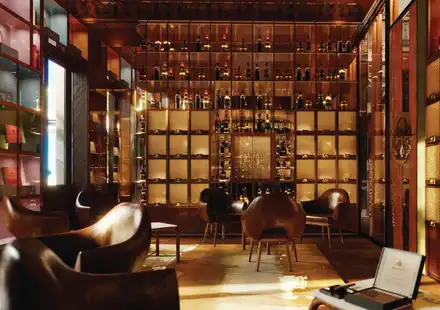
Monaco Basket Association
Monte-Carlo Société des Bains supports the players in the women’s MBA, helping them to move up
the divisions of women’s basketball and represent Monaco on the international stage.
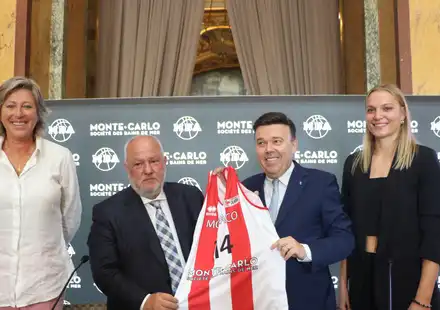
Festive Activities, Illuminations & Christmas Market in Monte-Carlo
From entertainment, illuminations to Christmas markets, find out where to go in Monaco to enjoy a magical festive season.
